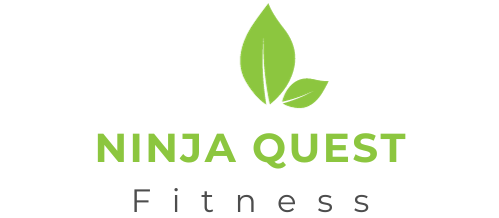Ever wondered why many lifters on a budget find themselves reaching for a pair of Vans when it’s time to hit the gym? Well, you’re not alone. The question buzzing in fitness circles is: “Are Vans good for lifting?”
These popular shoes are known for their flat, firm, and non-slip soles, making them a seemingly perfect fit for weightlifting, especially squats and deadlifts. But do they really live up to the hype, or are they just a cost-effective alternative to specialized lifting shoes? Let’s get to the bottom of this fitness conundrum.

Are Vans Good For Lifting?
Vans sneakers, much like Converse, are often considered for weightlifting due to their flat soles and minimalistic style. Here’s a detailed look at whether Vans are suitable for lifting and the factors that contribute to their effectiveness in the gym:
Flat Soles:
Vans typically feature flat, sturdy soles made of rubber, which provide a stable base that is beneficial for lifting. The flatness aids in distributing your body weight evenly, which is crucial when performing exercises that require a solid and stable stance, such as squats or deadlifts.
Minimal Cushioning:
Similar to Converse, Vans offer minimal cushioning, which is advantageous for weightlifting. The lack of thick, soft cushioning found in running shoes means there is less compression under heavy weights. This results in better force transfer between the floor and your feet, enhancing your ability to lift heavier weights with more control.
Grip and Traction:
Vans are designed with a signature waffle rubber outsole that provides good grip and traction. While this feature is primarily designed for skateboarding, it also works well in a gym setting, preventing slippage on the floor when lifting weights or performing other exercises.
Durability:
The durable canvas and suede uppers of Vans withstand wear and tear quite well, which is beneficial if you use them regularly in the gym. However, they might not be as durable under the strain of heavy lifting compared to dedicated weightlifting shoes.
Considerations and Limitations:
While Vans are suitable for casual lifting and beginner weight trainers, they do have limitations:

- Lack of Arch Support: Vans typically do not provide much arch support, which could be a problem for lifters with specific foot conditions or those who require additional support.
- Ankle Support: Vans, particularly the low-top models, offer little to no ankle support. This could be an issue for exercises that benefit from or require additional ankle stability.
- Not Specifically Designed for Lifting: Like Converse, Vans are not specifically designed for weightlifting. They lack features such as a raised heel or enhanced lateral support that are beneficial in more advanced lifting techniques and exercises.
Best Vans Lifting Shoes
Finding the right lifting shoe involves evaluating numerous factors, including comfort, stability, and value for money. Though not specifically designed for weightlifting, certain Vans models outshine others in this domain. Let’s see some models that optimize your lifting efforts.

- Vans Classic Slip-Ons: These shoes offer ease-of-use coupled with reliable performance. Their slide-on design minimizes time spent lacing, while the sturdy canvas upper supports lateral movements during lifts. It’s important to remember, though, that slip-ons may not provide enough snugness for heavy deadlifters.
- Vans Old Skool: Recognized by their iconic side stripe, these shoes incorporate a low-top design allowing ankle mobility—an essential aspect during lifts. The re-enforced toecaps withstand repeated wear, making them a durable option.
- Vans Sk8-Hi: Lovers of high-top shoes, rejoice! The Sk8-Hi’s offer supplemental ankle support, as they cover a larger area of the foot. They also retain the key features of Vans shoes including flat soles and dense construction.
- Vans Authentic: They’re simple, low profile, and lightweight. Consider these shoes if breathability ranks higher in your preferences. The cotton drill lining not just fosters aeration but also adds an element of comfort during strenuous lifting sessions.
Choosing Vans for lifting is a personal decision based on individual needs, comfort, and style preferences. If Vans align with your requirements, these models are indeed worth considering for a lifting regimen.
Frequently Asked Questions
Why choose Vans shoes for weightlifting?
Due to their flat soles and minimal heel-to-toe drop, Vans shoes offer stability and balance for weightlifting. However, their lack of specialized features like ankle support should be considered based on individual needs.
Which specific Vans models are suitable for lifting?
Some of the Vans models suitable for lifting include Classic Slip-Ons, Old Skool, Sk8-Hi, and Authentic. Each model has unique features like ease of use, ankle mobility, ankle support, and breathability, catering to different lifting preferences.
How do flat-soled shoes like Vans contribute to better lifts?
Flat soled shoes like Vans enhance balance and posture during lifts, improving the lifting experience. They offer greater stability and help maintain an optimal posture, necessary for effective weightlifting.
I am budget-conscious, are Vans suitable for my needs?
Yes, Vans shoes are an affordable alternative to specialized weightlifting shoes. They provide significant stability for lifting, making them a budget-friendly option for lifters.
Can Vans replace dedicated lifting shoes?
While Vans offer certain advantages like stability and affordability, they lack specialized features like ankle support found in dedicated lifting shoes. Therefore, the suitability of Vans as a replacement for dedicated lifting shoes depends on individual needs and comfort.

Hello, I’m Ravindra. Over the years, I’ve immersed myself deeply into the world of fitness and health, transforming both my body and mind. Writing has allowed me to share my journey, insights, and expertise with those just starting out and seasoned fitness enthusiasts alike. Beyond just routines and diets, I believe in inspiring others to adopt a holistic approach to well-being.
